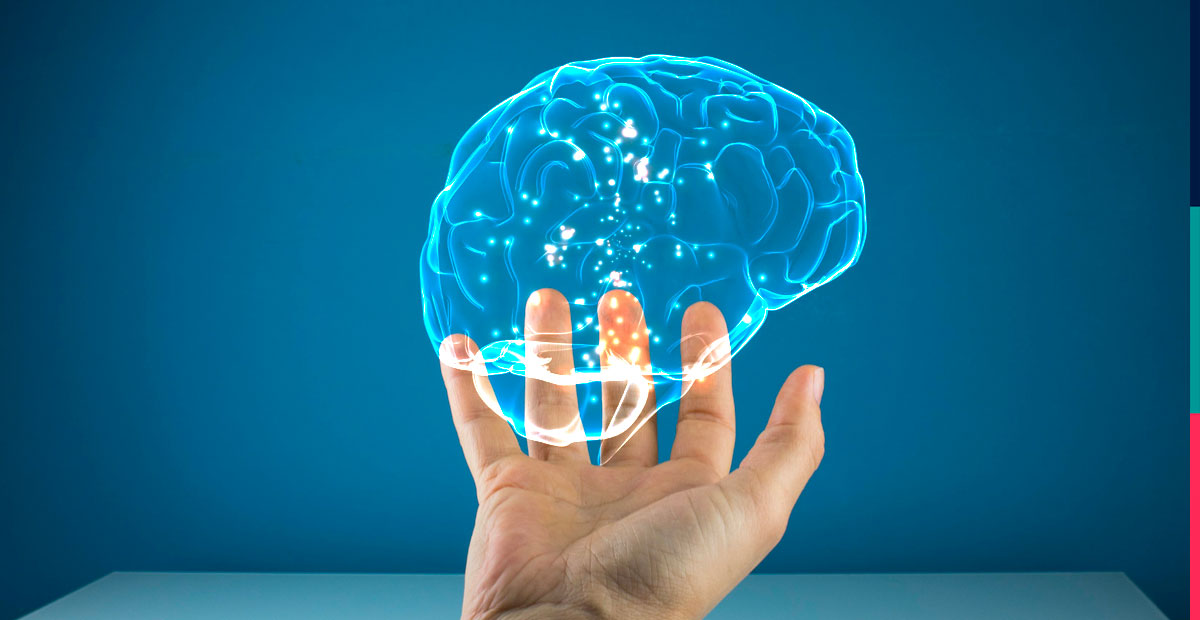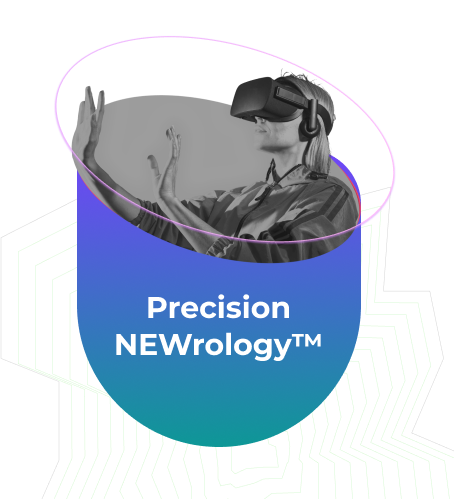
Why is an earlier diagnosis of Alzheimer’s disease key to flattening the growth curve of rapidly escalating patient populations?
Alzheimer’s disease, the leading cause of dementia, is notoriously difficult to diagnose in its initial stages. This is one reason that numbers of Alzheimer’s cases have skyrocketed to approximately 44 million worldwide, a figure expected to triple by 2050. According to the Alzheimer’s Association, the direct cost to American society of caring for those with Alzheimer’s in 2020 was an estimated $305 billion, with $206 billion of it (67%) paid by Medicare and Medicaid. By 2050 this cost is expected to increase to $1.1 trillion. As researchers are increasingly discovering, detecting Alzheimer’s before symptoms begin to fully present is critical to managing and preventing this punishing disease.
The challenges of early detection
Catching Alzheimer’s early has proved difficult in part because the disease’s symptoms are not unlike those of normal aging: occasional lapses in short-term memory, difficulty completing routine tasks, misplacing everyday objects. Individuals with these symptoms may attribute the changes to simply getting older, as may their loved ones. Others may recognize that their behavior is out of the ordinary but neglect to report it to their doctor or family members because they feel ashamed.
To effectively halt the progress of Alzheimer’s, we must tackle the disease before classic symptoms surface. This requires a better understanding of the pathology, which is rooted in a breakdown in communication among brain neurons. This can result from many factors, most commonly the accumulation of beta-amyloid protein plaque between neurons or the presence of abnormal amounts of tau protein tangled inside the neurons.
Today’s diagnostics: too little, too late
Neural messages that volley easily across synapses in a healthy brain are disrupted by these protein accumulations, leading brain cells to cease communication and eventually die. Typical diagnostic methods detect Alzheimer’s when this process has long been underway because this is when the signs of cognitive impairment become far harder to ignore or attribute to normal aging.
Once Alzheimer’s disease is suspected in a patient, a physician may recommend a number of diagnostic tests. These may include blood and urine testing, psychiatric and neurological evaluations, or brain imaging through an MRI, CT, or PET scan. An individual may also undergo a lumbar puncture, a procedure that tests the levels of related proteins in the cerebrospinal fluid of the lower back.
These tests are often expensive, and, in the case of the lumbar puncture, invasive and risky. Brain scans may need to be repeated once or twice annually, only to confirm what is already known: that brain cell damage is significant, irreversible, and getting worse. With the global number of people with dementia expected to reach 152 million in less than 30 years, the writing is on the wall: we have to find a way to halt the progression of Alzheimer’s sooner.
Hope in proactive intervention
Research overwhelmingly suggests that if we can begin identifying Alzheimer’s patients at the very beginning of the pathology, the future looks far brighter indeed. A recent study in The Lancet found that proactive reduction of 12 risk factors could delay or prevent dementia by as much as 40 percent. These factors—which include heavy drinking, exposure to air pollution and excessive noise, and danger of head injury—can significantly affect one’s likelihood to develop dementia.
The promise of proactive interventions also inspired World-Wide FINGERS, a 40-country network that aims to improve dementia outcomes through global clinical trials and knowledge sharing. Launched following a clinical trial in Finland that identified core factors influencing the progression of dementia, World-Wide FINGERS is working to make dementia treatment more effective and easier to scale in various geographic locations. In the pilot trial, researchers found that by positively adapting factors such as exercise, cognitive training, socialization, and diet, memory improved by 40 percent and executive function by 83 percent overall.
Researchers hope that by detecting dementia earlier and encouraging positive behaviors that have been shown to forestall it, they can prevent the cascade of negative effects that often accompany dementia in its late stages: escalating medical bills, troubling interpersonal behavior, anxiety over the future, and overall low quality of life. Perhaps most important, early intervention allows individuals to have agency over their own health outcomes.
Digital Biomarkers take center stage
While some recent computer and tablet software programs are designed to catch Alzheimer’s symptoms in their early stages, they still remain limited to the first few years before traditional methods of detection are generally employed. But digital biomarkers can make their quiet entrance years and even decades earlier.
Beta-amyloid can accumulate between neurons for as many as 20 years prior to the manifestation of Alzheimer’s symptoms, and tau protein can collect inside neurons for up to 10. The clues are right there for us to find: How might an Alzheimer’s prognosis change if these biomarkers could be detected when they first began to appear?
The earlier Alzheimer’s can be diagnosed, the better the chance that medical treatments—such as the removal of beta-amyloid or Tau from the brain—will be effective at forestalling the disease. Early diagnosis also mitigates the considerable anxiety that results from uncertainty about the cause of one’s cognitive decline, freeing up mental energy that can be much more productively directed toward lifestyle changes that have proven to stall or prevent Alzheimer’s progression.
In addition to putting healthier habits to work sooner, patients could benefit from new drugs and therapies that could be tested at earlier stages. This would allow researchers to sensitively measure the effects of such interventions during the months and years that the disease had previously progressed unchecked. It’s becoming increasingly clear that to meet the rising tide of Alzheimer’s cases, medical technology needs to act rather than react.
The eyes have it: ViewMind’s transformative approach
To harness the tremendous promise offered by early detection, how can we pinpoint those tell-tale proteins when they first begin to appear? As ViewMind has discovered, the secret lies in a digital biomarker technology that tracks the movement of the human eye.
The eyes, it turns out, are not just the window to the soul, but also to the brain. At ViewMind, we have pioneered a process that tracks particular patterns of eye movement that correlate with the accumulation of Beta-amyloid in the early stages of Alzheimer’s pathology. In just 20 minutes, our software can diagnose the presence of Alzheimer’s syndrome, as well as a wide range of other neurocognitive diseases, simply by recording the patterns of an individual’s eye movements.
Using virtual reality headsets and artificial intelligence software, ViewMind’s technology provides a solution that is without peer in sensitivity and specificity, allowing researchers and physicians to access brain alteration data at a much earlier stage than has previously been possible. Unlike standard cognition tests that might be ordered by a neurologist, our report provides objective data for a physician to interpret.
In one longitudinal study of individuals with Mild Cognitive Impairment (MCI), ViewMind technology predicted with 97% accuracy which patients would eventually develop Alzheimer’s disease. The ease of finding such definitive results over a 4-year time period augurs great promise for testing potential pharmaceutical treatments on dementia progression as well. Providing a controlled testing environment, our process makes it easy to study the effects of drugs on individual patients.
Prioritizing brain health worldwide
Why should we assess our brain health only when something seems to be wrong? We undergo general physicals each year to ensure that our vital signs, blood levels, and reflexes are normal, so why do we neglect this essential organ, the powerhouse of all of our cognition?
At present, brain health tends to be treated retroactively due to the high cost of testing and treatment. Procedures such as MRIs or lumbar punctures are typically recommended only in the later stages of disease progression and are then accessible only to those who have high-quality insurance or who live in countries with socialized medicine.
As the World Health Organization (WHO) hopes to address through its Mental Health Gap Action Programme, low-income countries have disproportionately few resources to address neurocognitive diseases such as dementia. By developing an affordable, accessible, and scalable technology, ViewMind hopes to contribute to research and innovation efforts such as those championed by the WHO to help eliminate such disparities.
A 20-minute test, a limitless future
It is our firm belief that everyone should have affordable, easy access to routine brain health assessments. With that guiding mission, ViewMind has set a goal of testing hundreds of millions of people a year in both clinical and non-clinical settings as part of standard health checks. By making our 20-minute eye-movement scan widely available, we hope to reduce both the stigma of seeking brain health care and the prohibitively high cost of accessing such health care.
Our software not only provides crucial health information to individuals at risk for neurodegenerative disease, it also enables the rapid collection of anonymized individual datasets that can aid in critical research on pharmaceutical solutions. It is our firm hope that ViewMind will both radically improve the lives of today’s Alzheimer’s patients and foster the development of revolutionary treatments in the decades to come.
Related Posts

ViewMind Welcomes Renata Afonso to Spearhead LATAM Expansion and Global Marketing Initiatives
ViewMind announces developer agreement with HP to help revolutionize the diagnosis and treatment of cognitive disorders ViewMind Inc., the brain health company, proudly announces the

Neurotech Takes The Stage At JPM 2024
It was my privilege to attend J.P. Morgan’s annual healthcare conference this week…

Davos Alzheimer’s Collaborative Announces Partnership to Identify People at Risk for Dementia in Rural Latin America
Millions of people using Google, Facebook, Twitter, Bing, AP News and other services now have access to your release…


